The Stari Grad Plain is located on Hvar Island in the Adriatic Sea, off the coast of Croatia in front of the city of Split. Hvar lies in the Dalmatian Archipelago between the islands of Brač, Vis and Korčula. The Stari Grad Plain is a cultural landscape and also a natural reserve. The fertile plain was colonized by Ancient Greece in the 4th century BC. The agricultural activity of grapes and olives has been maintained since the 4th century BCE to the present day. The plain is divided into geometrical plots bounded by dry stone walls, a system of land division as used by the Ancient Greeks. The Greek colonists also built 'trims', small dry stone shelters, and a system of rainwater harvesting of gutters and storage cisterns. The Stari Grad Plain has remained almost completely intact for over twenty-four centuries, from the 4th century BCE up to the present day. The Stari Grad Plain gained the status as a UNESCO World Heritage in 2008.
www.werelderfgoedfotos.nl © Copyright World Heritage Photos
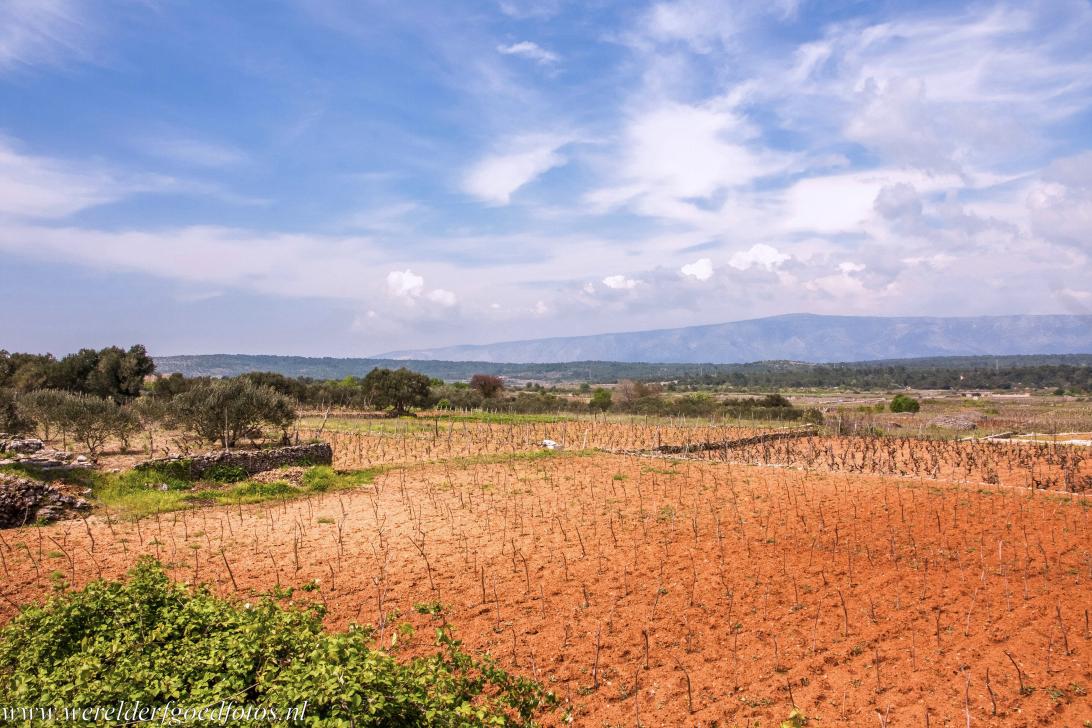
The Stari Grad Plain is situated on Hvar, an island of natural beauty in Croatia. It was colonized by the Ancient Greeks in the 4th century BC and remained almost intact over 24 centuries. The agricultural activity of grapes and olives has been maintained since the 4th century BC up to the present day. The Stari Grad Plain was inscribed on the UNESCO World Heritage List in 2008.

The Stari Grad Plain is situated on Hvar, an island of natural beauty in Croatia. It was colonized by the Ancient Greeks in the 4th century BC and remained almost intact over 24 centuries. The agricultural activity of grapes and olives has been maintained since the 4th century BC up to the present day. The Stari Grad Plain was inscribed on the UNESCO World Heritage List in 2008.
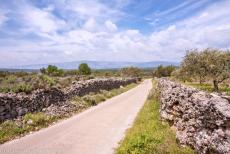
The Stari Grad Plain is a cultural landscape and is also a natural reserve. The Stari Grad Plain is divided into geometrical plots bounded by dry stone walls, a system of land division as used by the Ancient Greeks. The Stari Grad Plain remained almost intact for over twenty four centuries, from the 4th century BC up to the present day.
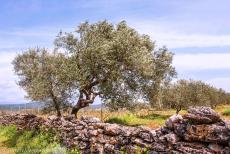
Stari Grad Plain: An olive orchard surrounded by a dry stone wall, the walls are evidence of the system of land division used by the Ancient Greeks. The stone walls were also used to protect the grapes and olives from frost damage, they retain the heat of the sun during the day and give it back during the night, preventing the temperature to drop below freezing.
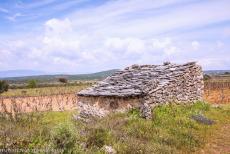
Stari Grad Plain: An ancient trim in a vineyard. Trims are small dry stone field shelters, they offer a safe shelter to farm workers during heavy weather. The trims were built of rough field stones, the roofs were used to dry fruit. Nowadays, the Stari Grad Plain is still famous for its olives and wines. The Stari Grad Plain is a UNESCO World Heritage.
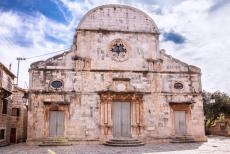
Stari Grad Plain: The Church of St. Stephen is the 17th century parish church of the town of Stari Grad. The church was built in the Dalmatian Baroque style. The Church of St. Stephen was made of stone from the Island of Korčula, the stone oxidized during the course of time and the church has now a red-brown colour. The Baroque façade has three portals. Above the central portal is a simple rose window.
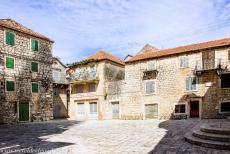
Stari Grad Plain: The Square of Škor is the town square of the old town of Stari Grad. Stari Grad is the oldest town on the Croatian Island of Hvar. Stari Grad has a long history, it was known as Pharos when it was founded around 400 BC by Greeks from the Island of Syracuse. Stari Grad is surrounded by vineyards, olive groves and lavender fields.
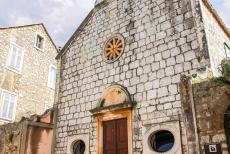
Stari Grad Plain: The small church of St. Roko is situated in the town of Stari Grad. Saint Roko is the patron saint of Stari Grad. The celebration of the patron saint of the town is held every year on the 16th August. The church was built in the 16th century by Petar Hektorović (1487-1572), an aristocratic landowner, a writer, a poet and collector of Dalmatian songs.
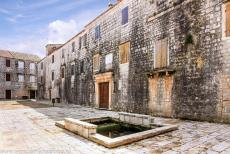
Stari Grad Plain: The seaward façade of Kastel Tvrdalj, a fortified mansion in the historic town of Stari Grad. It was built by Petar Hektorović as a stronghold in case of an Ottoman invasion of the island Hvar. Kastel Tvrdalj has a garden with exotic and Mediterranean plants, a salt water pond surrounded by arcades and three fresh water sources. The writer and poet Petar Hektorović set several inscriptions on the walls of his mansion in Latin and Croatian, the Croatian inscriptions are among the first writings in this language.
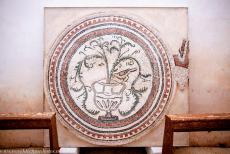
Stari Grad Plain: Archaeologists have discovered valuable Roman floor mosaics in the early Christian Church of St. John in Stari Grad, the most beautiful of these mosaics is depicting doves drinking from a Greek bowl, a kantharos. Wall paintings and a baptistery in the shape of a cross were also found. Other ancient mosaics can be seen in the Bianchini Palace.
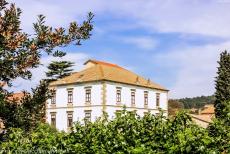
Stari Grad Plain: The Bianchini Palace is located in the town of Stari Grad, the palace was built by the sons of a local ship owner. The palace was built in the Neo-Renaissance style in 1896. In the same year, a Deodar cedar (Himalayan cedar) was planted in the garden. Nowadays, the former palace houses the local museum, the Stari Grad Museum shows a collection of artifacts found at the Stari Grad Plain.
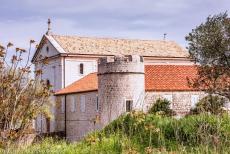
Stari Grad Plain: The fortified tower of the Dominican Monastery of St. Petar of Mučenik in Stari Grad. The Dominican Monastery was founded in 1482. After the Ottoman attack on the Island of Hvar in the 16th century, the monastery was fortified. The tomb of the Croatian writer and poet Petar Hektorović and his mother is situated in the monastery church.
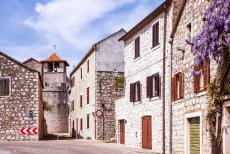
Stari Grad Plain: The bell tower of Dominican Monastery, situated in the old town of Stari Grad. The monastery has an arcaded courtyard planted with palms and orange trees. The museum of the Dominican Monastery houses several important works of art, among them a painting by the Venetian artist Jacopo Tintoretto, the Lamentation of Christ (ca.1560).
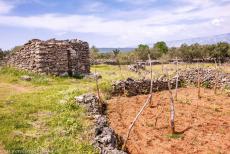
Stari Grad Plain: A trim is a small dry stone shelter, in front of the trim stands a small cistern for holding rain water. The Greek colonists built a huge system of rainwater harvesting, it consisted of gutters, ditches and storage cisterns. Since ancient Greek times, the agricultural landscape of the Stari Grad Plain has changed little.
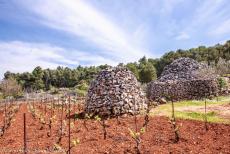
Stari Grad Plain: Several ancient trims in a vineyard, trims are tiny dry stone shelters. Nowadays, about ninety trims are preserved in the Stari Grad Plain. The system of land division used by the ancient Greeks has remained in use for over twenty-four centuries. The Stari Grad Plain gained the status as a UNESCO World Heritage in 2008.
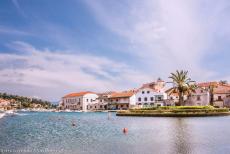
Stari Grad Plain: The small town of Vrboska is situated on the north coast of the Island of Hvar. Vrboska lies along the banks of a small horseshoe shaped bay, surrounded by pine trees. The Stari Grad Plain is a flat plain, located between the town of Stari Grad and the town of Vrboska. The Island of Hvar is considered one of the most beautiful Croatian Islands.
